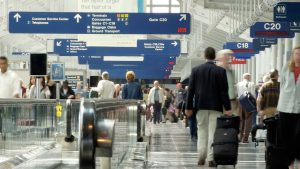In fact, in day-to-day life, the transportation industry needs to be fast-paced and smoothly coordinated. The application of a high-tech taxi dispatch system is the prime factor of contemporary taxi services rendering. We will answer the question “How does taxi dispatch work?” in this article through the intricate architecture of taxi dispatching.
Core Concepts of How Taxi Dispatch Works?
How does taxi dispatch work? In its very essence, the taxi dispatching system is a broad software program that is intended to ease the job of headquarters by automating the dispatching process. It acts as the central communication point where customers’ requests will merge with drivers assignments, and also the real-time operation data.
Customer Request Initiation
The trip starts when a patron is about to make a total of trips available to be taken. Such a request can be made through different options including mobile apps, phone calls, or websites, basically. While dispatch system collects vital information about customer that may include location, destination, and preferred pick-up time.
Data Processing and Analysis
Following the submission of a customer order request, the dispatch system immediately processes a wide specter of data points. Key factors considered include:
Driver Availability: The system evaluates the status of drivers who are available in the shared proximity of the customer’s location.
Proximity and Route Optimization: The system employs simple algorithms to find out road logistics for every driver. As a result, to get from the customer location to the gathering point as fast as possible.
Traffic Conditions: The system takes into consideration live traffic data to make sure that the routes are not prone to hold-ups and traffic.
Demand Patterns: Historical information containing demand patterns is analyzed to determine the times when demand is higher. Adjustments for resource distribution to avoid the risk of deficiency is done on these evaluations.
Driver Assignment and Notification
Based on the report generation, the logistics platform locates the best-identified driver to satisfy the customer’s need or demand. The route planning is done considering proximity to the drivers as one of the priorities. The people in need of transport services, and the workload. As soon as your request is assigned to the driver, the real-time notifications are a part of the process that goes to both the drivers and the customers. Such notifications contain the drivers’ names, the vehicle model, and the estimated time of arrival.
Real-Time Monitoring and Tracking
Along the way, the customer and the dispatcher would be able to keep eye on one another in real-time. The dispatcher is able to get information on the driver’s location and progress, and the dispatcher may get a clear indication of transparency and accountability. A solution to this problem, on the other hand, is the ability for a customer to track the driver’s progress and location with the taxi company’s app so that they can stay in touch with the driver and stay assured or at peace of mind.
Continuous Optimization and Adaptation
The efficiency of a taxi dispatching system is not constant; rather, it continues to be improved and adapted. It works as a system under continuous improvements and optimizations. Using machine learning to learn from past situations, the system will be able to enhance its operation. This can be done by adjusting it from time to time to increase the system’s efficiency and customer satisfaction.
Dispatching System for Taxi’s
Eventually, the essence of this dispatching system is a complex yet crucial mechanism. That enables the simplest and most seamless delivery of taxi services to passengers. Extending state-of-the-art technology and a deft analytical approach, these systems allow taxi companies to obtain operational efficiency that is beyond comparison. As a result, these provide their customers with topmost services and easily adjust to quick changes in market conditions. In conjunction with the evolution of the transportation system, taxi scheduling will continue to be the future mobility dynamics.





